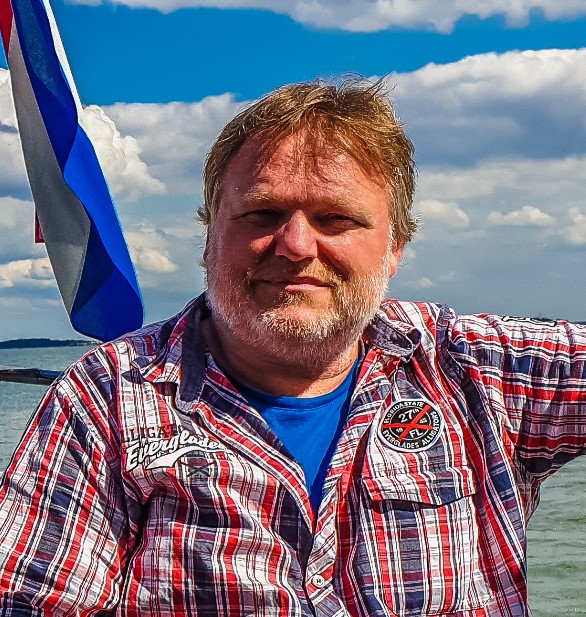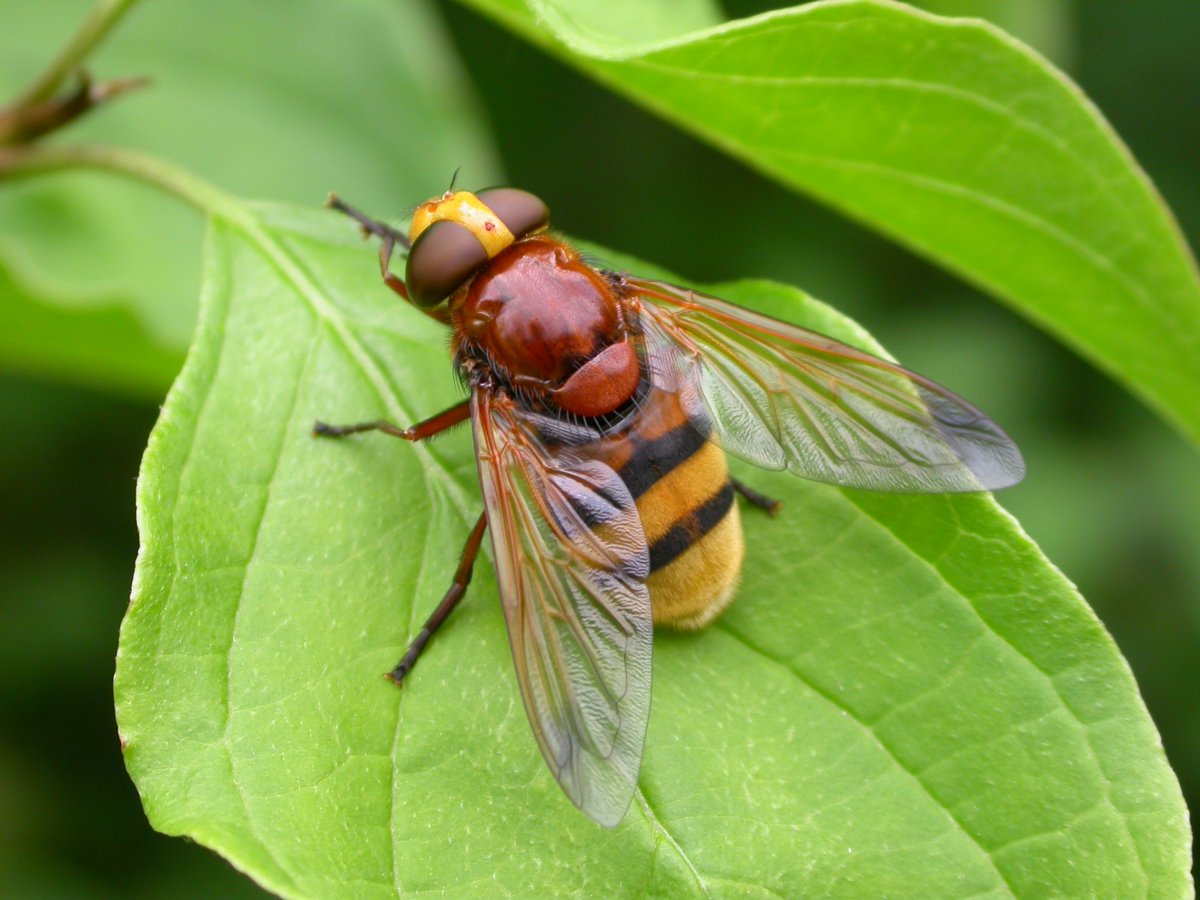Interview with Gerard Pennards
This is the fifth in a series of interviews with the network of Hoverfly Experts involved in developing the IUCN’s European Red List (ERL) of Hoverflies. The project aims to assess the extinction risk of hoverfly species across Europe, and will contribute to guiding decisions and conservation action for these species at the European level.
In this instalment, we talk with Gerard Pennards, who is an insect taxonomist, currently leading a team of general entomologists and some specialists in spiders, beetles, mites and springtails in Amsterdam. They are a group of enthusiastic and renowned arthropod specialists who are working on projects in the field of environmental studies and regulatory services in the Agrochemical Industry, operating in the Netherlands, Germany, Southwest France and other European countries. The company he works for “brings extensive experience and knowledge in both taxonomy and environmental toxicology, for example in testing on non-target arthropods and soil organisms in-field, pollinator field studies, wildlife field studies including monitoring, effect and residues and ecological impact assessments”.
Gerard became interested in all kinds of insects in the 1980s. His enthusiasm – particularly for flies (Diptera) - deepened when he started his biology studies at the University of Wageningen. “By then Dutch dipterologists just started a project to collect data to make a preliminary atlas of the Dutch hoverflies, and I was very interested so I participated and started collecting and studying those interesting little creatures. It quickly evolved from the Netherlands to Europe and beyond.”
Gerard’s favorite species is Volucella zonaria, or Hornet Plumhorn, a spectacular Hornet mimic which looks particularly like a hornet worker in flight. He became interested, because when he first started examining hoverflies, this enormous species was a rare migrant in the Netherlands, but starting to become more common, “For me it was a very big wish to see and catch one. It took some time, and to me it had reached almost mythical proportions until I caught my first specimen in 1998 in the eastern part of the Netherlands. You can imagine my joy on that moment! I’m still very happy when I see one of those in the city sitting on the buddleias”
Gerard believes that hoverflies are important to study and understand because they can play a very important role in nature conservation. “First of all they can be very good pollinators, and second they can be beneficial for the biological control of pest species like aphids. Furthermore they can be a strong indicator for the status of nature reserves and other areas, because a lot of species have a specific set of requirements for their habitat. A carefully selected species list from a certain area can give us a detailed insight in the ‘biodiversity health’ of that system because of these preferences of the species involved.”
However, humans and our activities can have severe effects on nature and ecological systems, this is particularly evident within populated and highly developed regions such as Western Europe. “A lot of habitats – especially those that don’t have a direct benefit for humans – are either destroyed or transformed to fit our requirements for agriculture or housing areas. Because of this, the biodiversity also declines and so does the number of hoverfly species. So in the light of the always increasing numbers of people and their needs, the future as it is now doesn’t look too bright.”
There is hope though. In recent decades, hoverflies have gained more and more attention from biologists. In the past, data about pollinators didn’t receive the attention it deserved “I hope this will change with the construction of the European Red list of Hoverflies. I’m expecting a very useful base for further research in the future and the use of the species in this list in future conservation of nature.”
He also thinks that everyone interested in hoverflies or other forms of wildlife and plants can do something to help. He suggest that “if you have a garden you can think of planting trees, bushes or flowers that can be used by hoverflies for foraging. Furthermore, you could leave parts of your garden a bit ‘untidy’ by making piles of dead wood and/or leaves, not removing aphid infested plants, making a small pond and so on. All this to give hoverflies opportunities for feeding and reproducing”. He also believes in citizen science initiatives that gather important data with the help of wildlife enthusiasts.
Gerard got involved with the IUCN when the European Red List of Hoverflies project started. “A group of enthusiastic hoverfly experts got together and they will make this project a success. I am one of the lead assessors of a certain group of hoverflies in this project, mainly the saproxylic species, which are dependent on dead or decaying wood”. He believes that this list will be the future step stone for a more advanced approach to the conservation and protection of biodiversity areas in Europe, combined with other projects with the same purpose. “This list is the beginning; from here we can think of performing other activities to gather more data and other information to improve the status of list in the future. Hopefully we can get to a better approach of combining the needs of humans with the care for our environment”.


